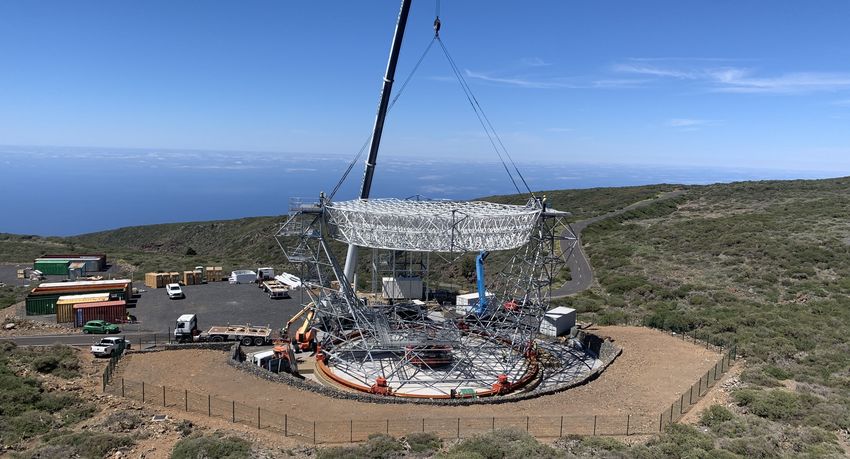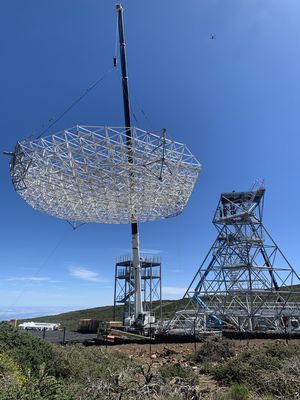During this complicated process, the 18-tonne mirror dish was first hoisted to a height of 18 meters above the ground. A 200-tonne crane then lifted it safely into position. Thanks to the perfect weather and the experience of the companies involved, everything went smoothly and the work was completed within a few hours.
The elegant mechanical design of the telescope is the result of a collaboration between MPP, LAPP Annecy, IFAE Barcelona and several industrial partners. IAC, the operator of the Roque de los Muchachos observatory on La Palma, is in charge of the construction and installation.
Parallel to LST-4, the consortium is also pushing ahead with the construction of LST-2 and LST-3 as well as LST-4. The construction and assembly of the upcoming LSTs are on schedule and are expected to be completed in early 2026. LST-1 was inaugurated in 2018, has completed its commissioning and is already producing scientific results.

